English for Academic Purposes: HR Department's Impact on Business
VerifiedAdded on 2023/04/20
|11
|841
|496
Essay
AI Summary
This essay explores the essential role of the Human Resources (HR) department in business, emphasizing its contribution to employee engagement, strategic planning, and overall business growth. It analyzes the objectives of HR, the changing role of HRM from traditional perspectives to modern soft management approaches, and discusses the Michigan and Harvard models of HRM. The essay also addresses arguments against the necessity of an HR department, such as the belief that flat structures and technological support diminish its need. Ultimately, it concludes that HR plays a vital role in developing strategies, managing employee needs, and fostering competitive advantage, although challenges like role duplication and increased work pressure need to be addressed. The essay references academic sources to support its claims, highlighting the importance of HRM practices for business sustainability. Desklib provides access to this and other solved assignments.

ENGLISH FOR ACADMIC
PURPOSE
HR department is the essential need of business
PURPOSE
HR department is the essential need of business
Paraphrase This Document
Need a fresh take? Get an instant paraphrase of this document with our AI Paraphraser
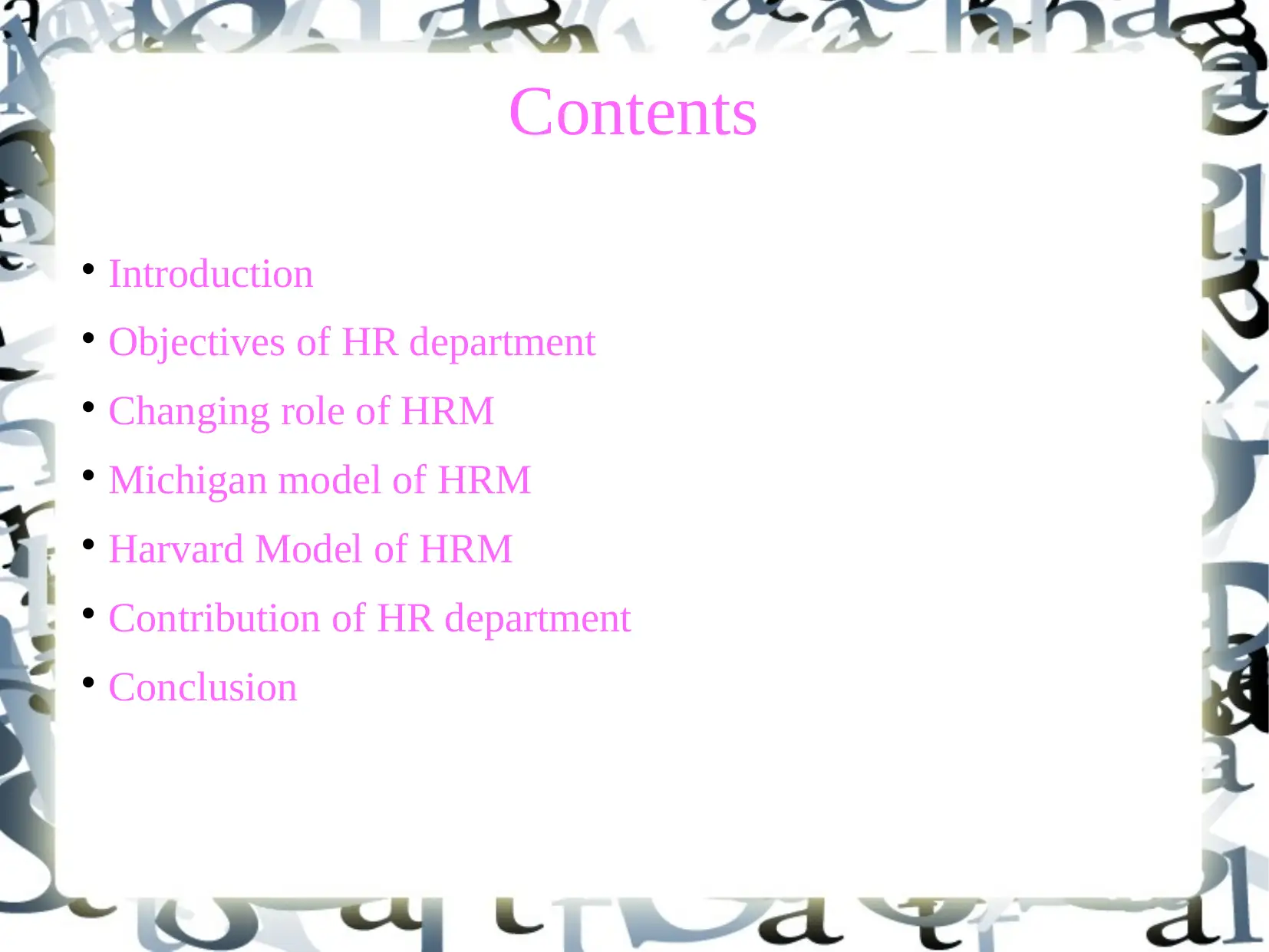
Contents
Introduction
Objectives of HR department
Changing role of HRM
Michigan model of HRM
Harvard Model of HRM
Contribution of HR department
Conclusion
Introduction
Objectives of HR department
Changing role of HRM
Michigan model of HRM
Harvard Model of HRM
Contribution of HR department
Conclusion
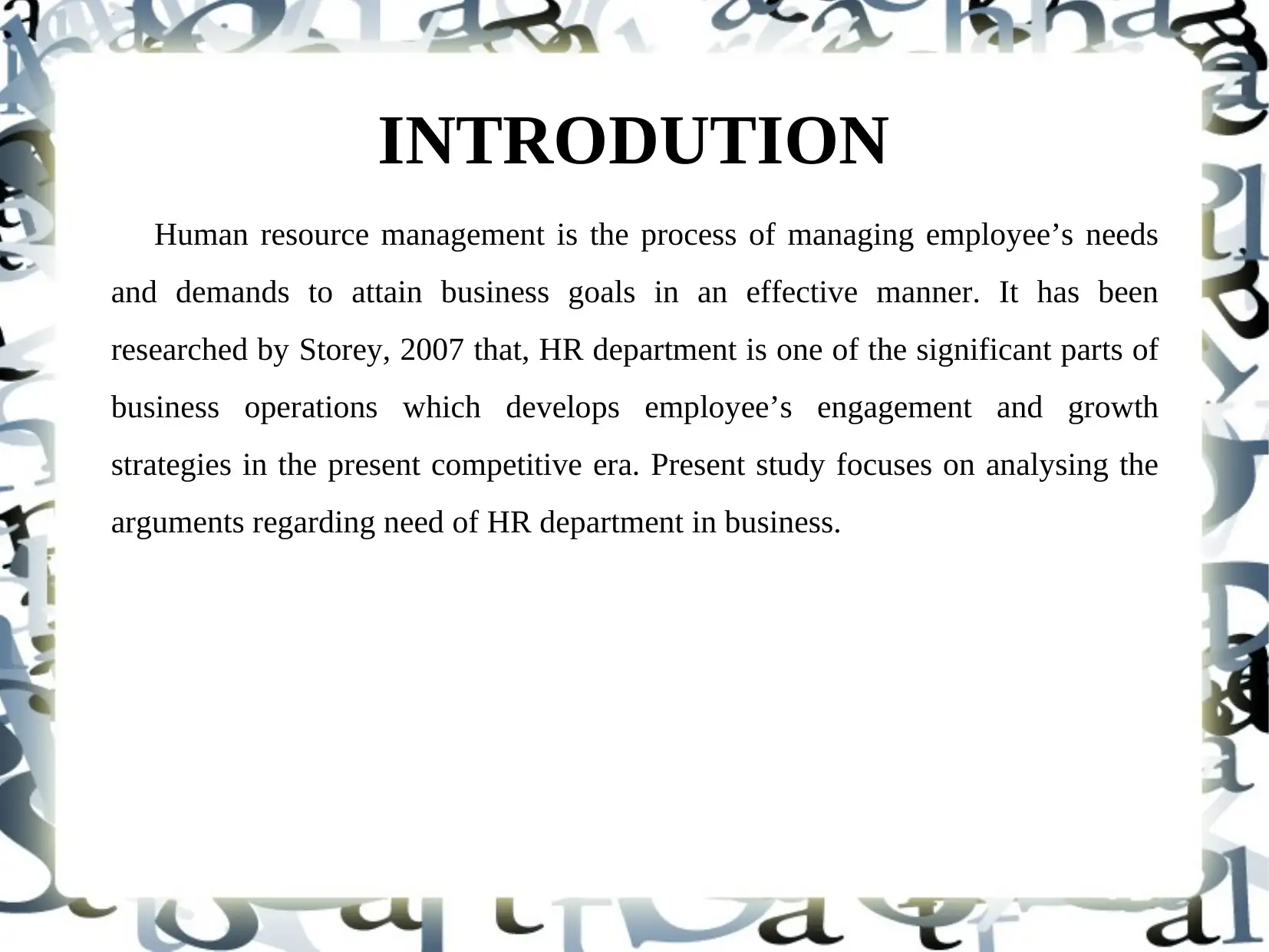
INTRODUTION
Human resource management is the process of managing employee’s needs
and demands to attain business goals in an effective manner. It has been
researched by Storey, 2007 that, HR department is one of the significant parts of
business operations which develops employee’s engagement and growth
strategies in the present competitive era. Present study focuses on analysing the
arguments regarding need of HR department in business.
Human resource management is the process of managing employee’s needs
and demands to attain business goals in an effective manner. It has been
researched by Storey, 2007 that, HR department is one of the significant parts of
business operations which develops employee’s engagement and growth
strategies in the present competitive era. Present study focuses on analysing the
arguments regarding need of HR department in business.
⊘ This is a preview!⊘
Do you want full access?
Subscribe today to unlock all pages.

Trusted by 1+ million students worldwide
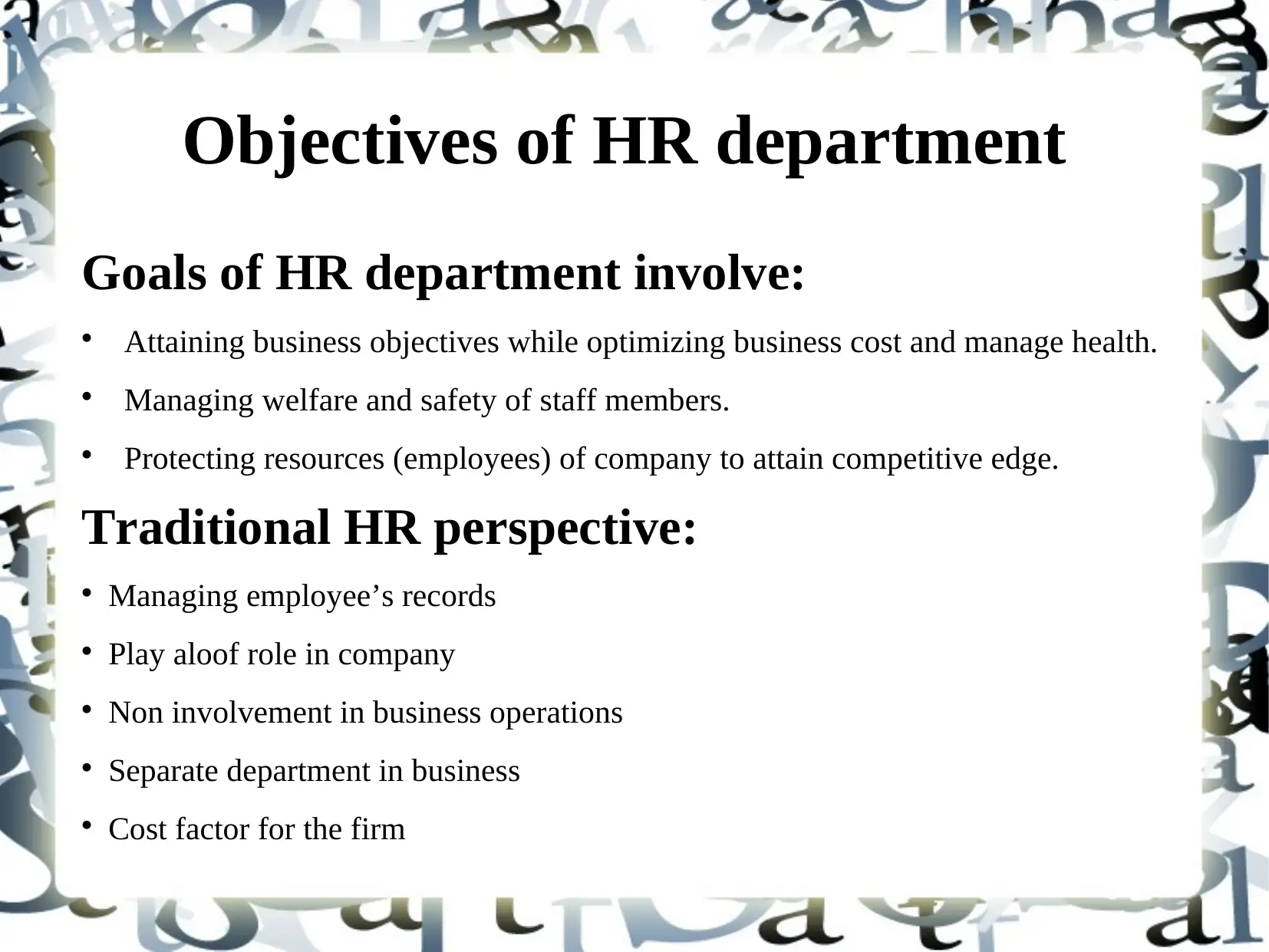
Objectives of HR department
Goals of HR department involve:
Attaining business objectives while optimizing business cost and manage health.
Managing welfare and safety of staff members.
Protecting resources (employees) of company to attain competitive edge.
Traditional HR perspective:
Managing employee’s records
Play aloof role in company
Non involvement in business operations
Separate department in business
Cost factor for the firm
Goals of HR department involve:
Attaining business objectives while optimizing business cost and manage health.
Managing welfare and safety of staff members.
Protecting resources (employees) of company to attain competitive edge.
Traditional HR perspective:
Managing employee’s records
Play aloof role in company
Non involvement in business operations
Separate department in business
Cost factor for the firm
Paraphrase This Document
Need a fresh take? Get an instant paraphrase of this document with our AI Paraphraser
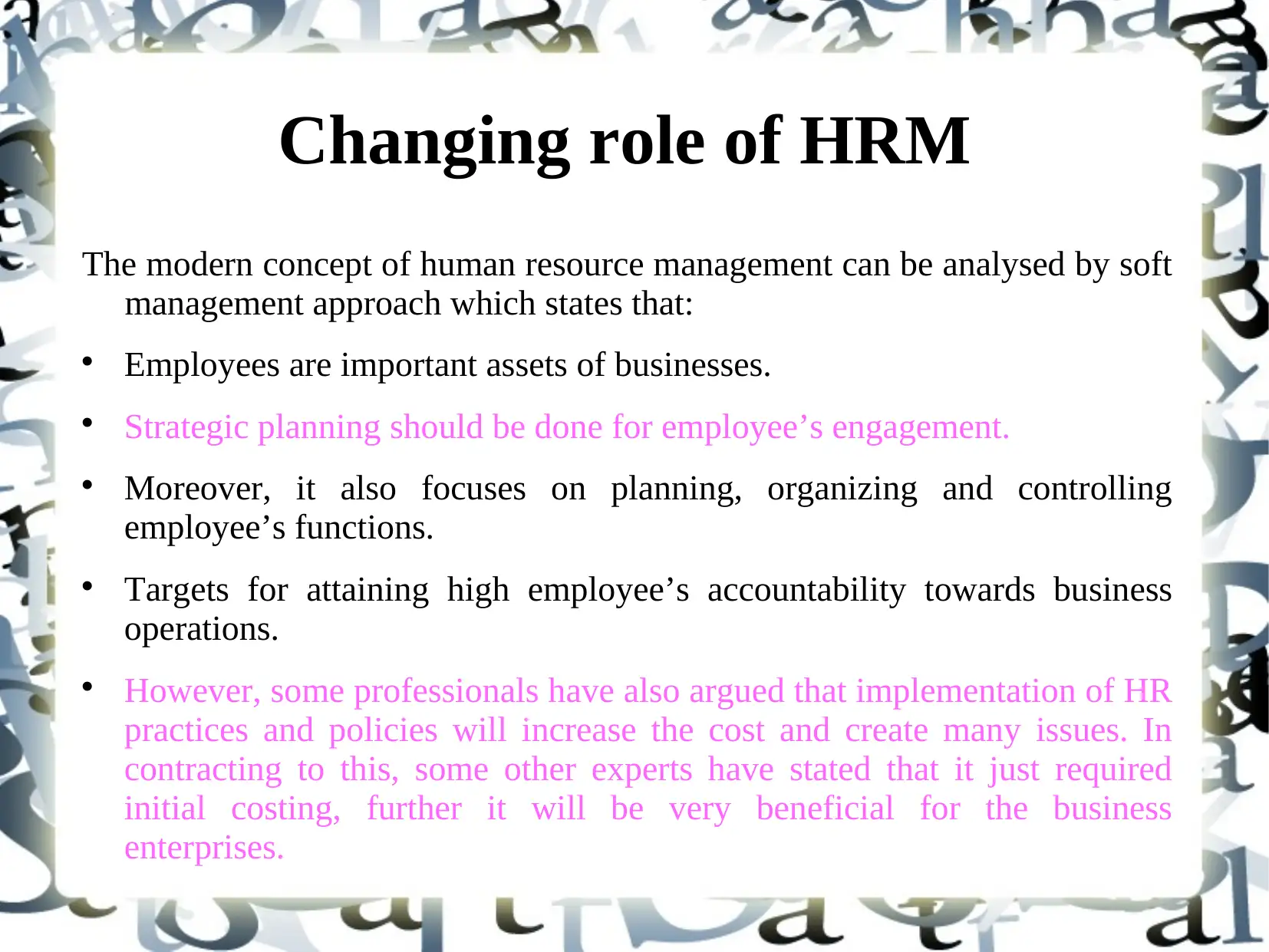
Changing role of HRM
The modern concept of human resource management can be analysed by soft
management approach which states that:
Employees are important assets of businesses.
Strategic planning should be done for employee’s engagement.
Moreover, it also focuses on planning, organizing and controlling
employee’s functions.
Targets for attaining high employee’s accountability towards business
operations.
However, some professionals have also argued that implementation of HR
practices and policies will increase the cost and create many issues. In
contracting to this, some other experts have stated that it just required
initial costing, further it will be very beneficial for the business
enterprises.
The modern concept of human resource management can be analysed by soft
management approach which states that:
Employees are important assets of businesses.
Strategic planning should be done for employee’s engagement.
Moreover, it also focuses on planning, organizing and controlling
employee’s functions.
Targets for attaining high employee’s accountability towards business
operations.
However, some professionals have also argued that implementation of HR
practices and policies will increase the cost and create many issues. In
contracting to this, some other experts have stated that it just required
initial costing, further it will be very beneficial for the business
enterprises.
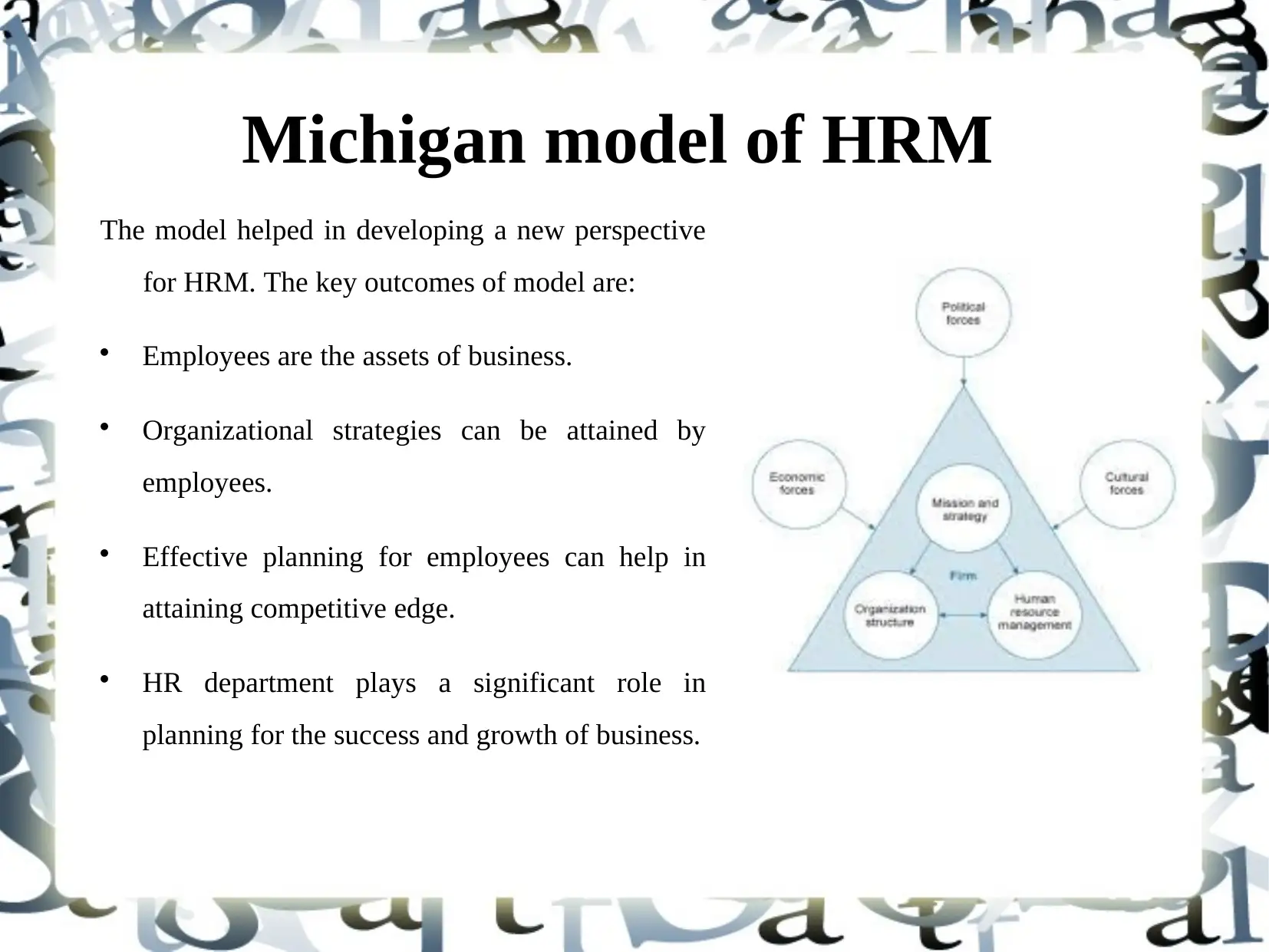
Michigan model of HRM
The model helped in developing a new perspective
for HRM. The key outcomes of model are:
Employees are the assets of business.
Organizational strategies can be attained by
employees.
Effective planning for employees can help in
attaining competitive edge.
HR department plays a significant role in
planning for the success and growth of business.
The model helped in developing a new perspective
for HRM. The key outcomes of model are:
Employees are the assets of business.
Organizational strategies can be attained by
employees.
Effective planning for employees can help in
attaining competitive edge.
HR department plays a significant role in
planning for the success and growth of business.
⊘ This is a preview!⊘
Do you want full access?
Subscribe today to unlock all pages.

Trusted by 1+ million students worldwide
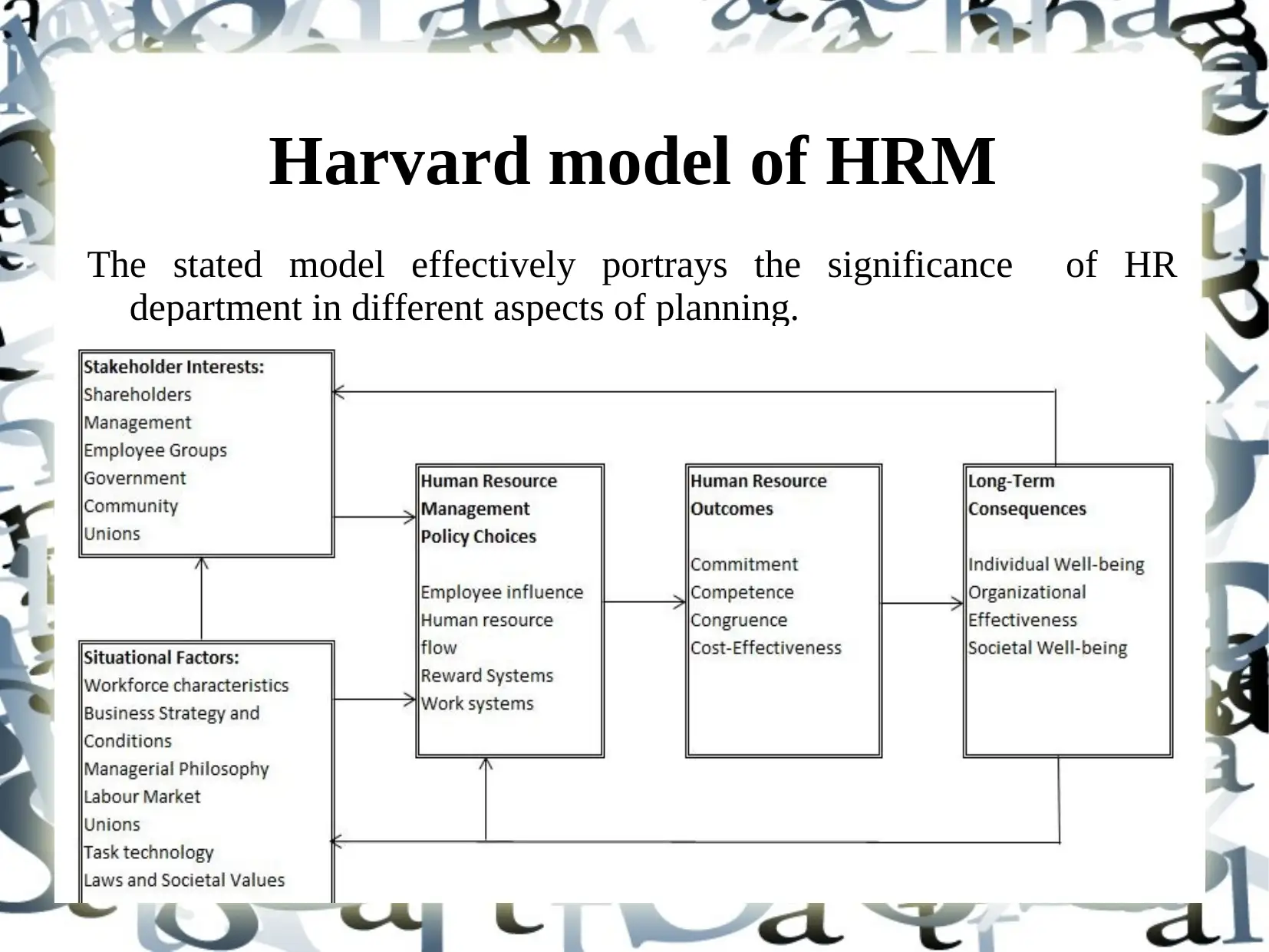
Harvard model of HRM
The stated model effectively portrays the significance of HR
department in different aspects of planning.
The stated model effectively portrays the significance of HR
department in different aspects of planning.
Paraphrase This Document
Need a fresh take? Get an instant paraphrase of this document with our AI Paraphraser
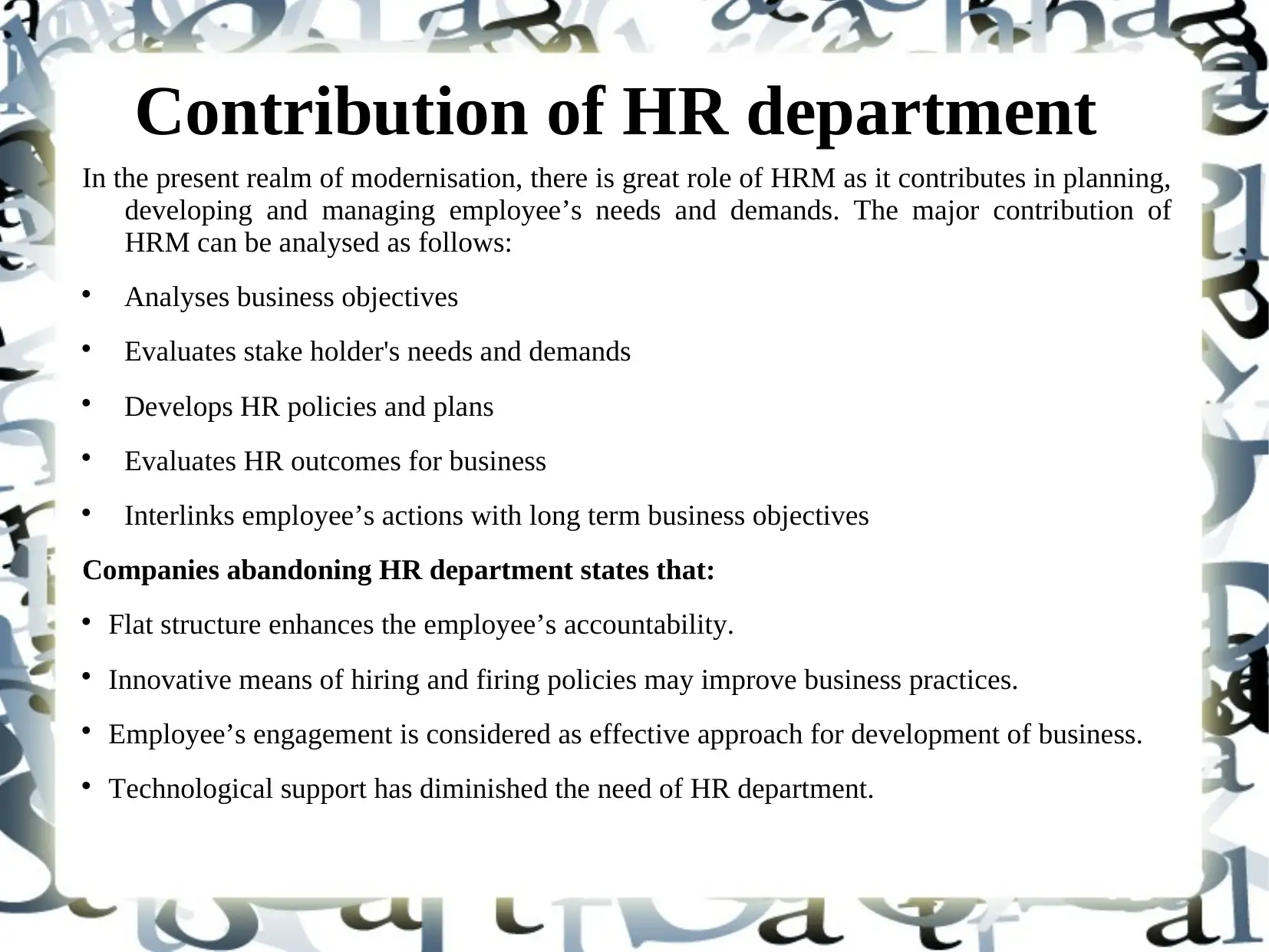
Contribution of HR department
In the present realm of modernisation, there is great role of HRM as it contributes in planning,
developing and managing employee’s needs and demands. The major contribution of
HRM can be analysed as follows:
Analyses business objectives
Evaluates stake holder's needs and demands
Develops HR policies and plans
Evaluates HR outcomes for business
Interlinks employee’s actions with long term business objectives
Companies abandoning HR department states that:
Flat structure enhances the employee’s accountability.
Innovative means of hiring and firing policies may improve business practices.
Employee’s engagement is considered as effective approach for development of business.
Technological support has diminished the need of HR department.
In the present realm of modernisation, there is great role of HRM as it contributes in planning,
developing and managing employee’s needs and demands. The major contribution of
HRM can be analysed as follows:
Analyses business objectives
Evaluates stake holder's needs and demands
Develops HR policies and plans
Evaluates HR outcomes for business
Interlinks employee’s actions with long term business objectives
Companies abandoning HR department states that:
Flat structure enhances the employee’s accountability.
Innovative means of hiring and firing policies may improve business practices.
Employee’s engagement is considered as effective approach for development of business.
Technological support has diminished the need of HR department.
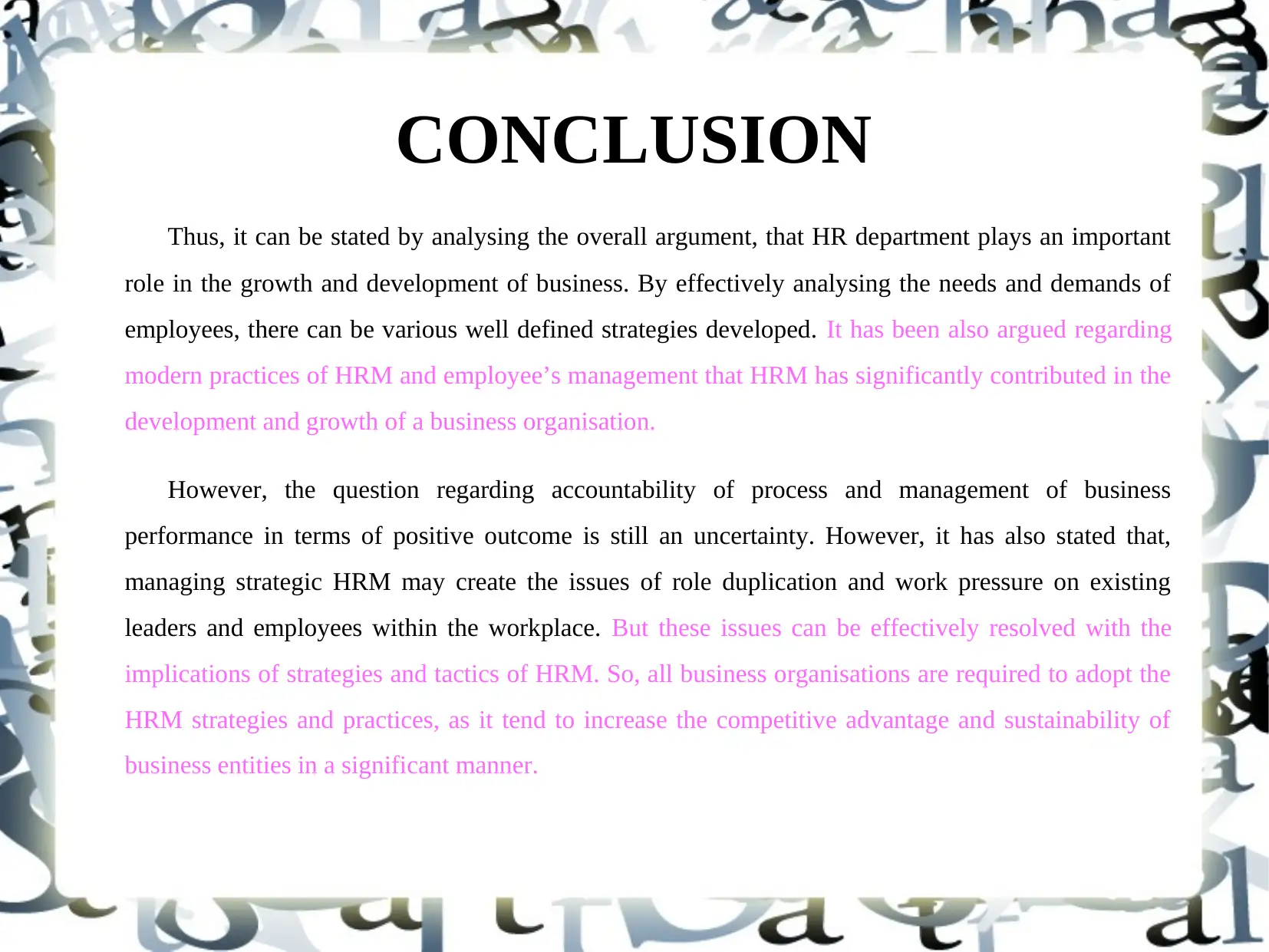
CONCLUSION
Thus, it can be stated by analysing the overall argument, that HR department plays an important
role in the growth and development of business. By effectively analysing the needs and demands of
employees, there can be various well defined strategies developed. It has been also argued regarding
modern practices of HRM and employee’s management that HRM has significantly contributed in the
development and growth of a business organisation.
However, the question regarding accountability of process and management of business
performance in terms of positive outcome is still an uncertainty. However, it has also stated that,
managing strategic HRM may create the issues of role duplication and work pressure on existing
leaders and employees within the workplace. But these issues can be effectively resolved with the
implications of strategies and tactics of HRM. So, all business organisations are required to adopt the
HRM strategies and practices, as it tend to increase the competitive advantage and sustainability of
business entities in a significant manner.
Thus, it can be stated by analysing the overall argument, that HR department plays an important
role in the growth and development of business. By effectively analysing the needs and demands of
employees, there can be various well defined strategies developed. It has been also argued regarding
modern practices of HRM and employee’s management that HRM has significantly contributed in the
development and growth of a business organisation.
However, the question regarding accountability of process and management of business
performance in terms of positive outcome is still an uncertainty. However, it has also stated that,
managing strategic HRM may create the issues of role duplication and work pressure on existing
leaders and employees within the workplace. But these issues can be effectively resolved with the
implications of strategies and tactics of HRM. So, all business organisations are required to adopt the
HRM strategies and practices, as it tend to increase the competitive advantage and sustainability of
business entities in a significant manner.
⊘ This is a preview!⊘
Do you want full access?
Subscribe today to unlock all pages.

Trusted by 1+ million students worldwide
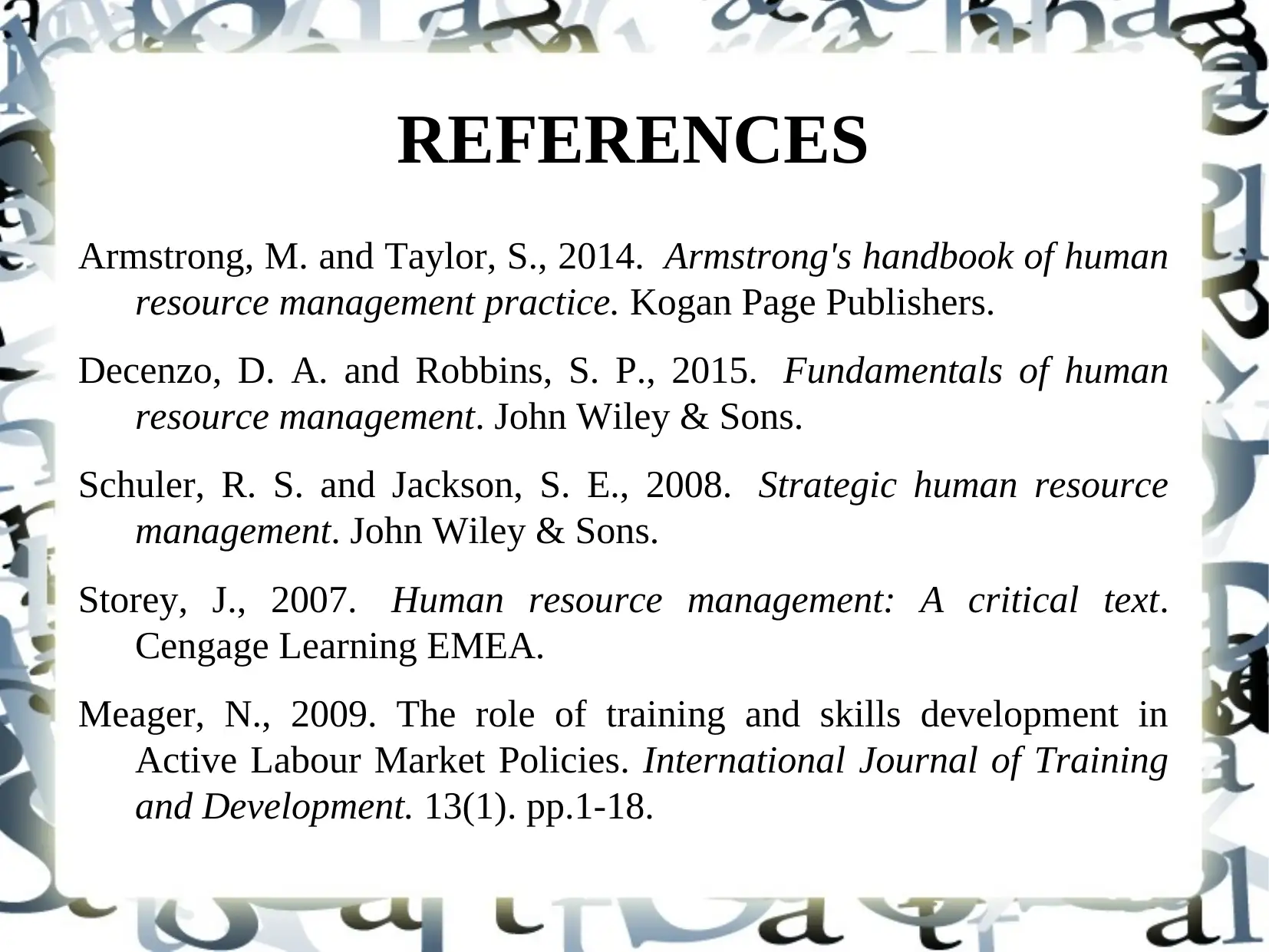
REFERENCES
Armstrong, M. and Taylor, S., 2014. Armstrong's handbook of human
resource management practice. Kogan Page Publishers.
Decenzo, D. A. and Robbins, S. P., 2015. Fundamentals of human
resource management. John Wiley & Sons.
Schuler, R. S. and Jackson, S. E., 2008. Strategic human resource
management. John Wiley & Sons.
Storey, J., 2007. Human resource management: A critical text.
Cengage Learning EMEA.
Meager, N., 2009. The role of training and skills development in
Active Labour Market Policies. International Journal of Training
and Development. 13(1). pp.1-18.
Armstrong, M. and Taylor, S., 2014. Armstrong's handbook of human
resource management practice. Kogan Page Publishers.
Decenzo, D. A. and Robbins, S. P., 2015. Fundamentals of human
resource management. John Wiley & Sons.
Schuler, R. S. and Jackson, S. E., 2008. Strategic human resource
management. John Wiley & Sons.
Storey, J., 2007. Human resource management: A critical text.
Cengage Learning EMEA.
Meager, N., 2009. The role of training and skills development in
Active Labour Market Policies. International Journal of Training
and Development. 13(1). pp.1-18.
Paraphrase This Document
Need a fresh take? Get an instant paraphrase of this document with our AI Paraphraser

1 out of 11
Related Documents
Your All-in-One AI-Powered Toolkit for Academic Success.
+13062052269
info@desklib.com
Available 24*7 on WhatsApp / Email
![[object Object]](/_next/static/media/star-bottom.7253800d.svg)
Unlock your academic potential
Copyright © 2020–2025 A2Z Services. All Rights Reserved. Developed and managed by ZUCOL.



